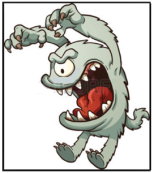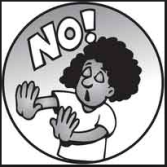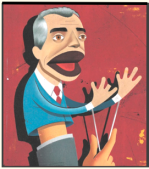
YOU’LL NEVER SEE HOW ANGRY I AM –
I barely know, myself!
PREVIOUS: P-A ‘nice’ comments
SITE: Constructive, Passive & Aggressive Leadership styles
REVIEW
1.The GAME (Post: How its played)
a. DEF : Passive-Aggressive ‘Personality Disorder’ (PAPD)
A 2-handed ‘game’ which always requires the Passive-Aggressive (P-As) person & the Volatile (Vs) one to react (in ‘Games People Play’ – audio – by Eric Berne)
✰ web-MD …. apparently compliant behavior, with intrinsic obstructive or stubborn qualities, to cover deeply felt aggressive feelings that cannot be more directly expressed….
✰ Wikipedia ….. a personality trait marked by a pervasive pattern of negative attitudes & passive, usually disavowed resistance … expressed as learned helplessness, procrastination, resentment, stubbornness, sullenness, or deliberate/repeated failure to accomplish requested tasks for which one is (often explicitly) responsible….
✰ DSM VI …. the behavior often reflects an unexpressed hostility or resentment stemming from a frustrating interpersonal or institutional relationship on which an individual is overly dependent
✰ The Straight Dope …. people who suffer from PAPD expect disappointment, and gain a sense of control over their lives by bringing it about.
b. ACoAs: MANY of us grew up in one of 2 emotional climates :
✶ emotionally volatile – being around loud, hyper, dramatic, raging parents / relatives – which has made some ACoAs emotionally gun-shy. We had to sit on our own anger – there was so much flying around, and we didn’t want to be like them, so we shoved our rage into a huge locked room & tried to throw away the key. But now it comes out sideways!
 ✶ emotionally repressed – the other extreme found some of us in a family of uptight, buttoned down, emotionally cut-off, perhaps P-A types, who made a point of suppressing any intense emotion in their children. They may have believed it was ‘spiritually correct’, or they just didn’t want their own repressed pain to get triggered, &y didn’t have the skill/ tools to deal with ‘big feelings’ from their kids. We either copied their style or became ‘dramatic’ & over-reactive to everything.
✶ emotionally repressed – the other extreme found some of us in a family of uptight, buttoned down, emotionally cut-off, perhaps P-A types, who made a point of suppressing any intense emotion in their children. They may have believed it was ‘spiritually correct’, or they just didn’t want their own repressed pain to get triggered, &y didn’t have the skill/ tools to deal with ‘big feelings’ from their kids. We either copied their style or became ‘dramatic’ & over-reactive to everything.
• Both styles have deeply effected our relationship to anger & rage.
IMP: These are normal human EMOTIONS (Es), which are just forms of energy & by themselves are not dangerous or bad.
✶✶ What to watch out for are the ACTIONS we take to express these Es! If we express them safely, we don’t hurt anyone & in fact feel lighter & can function better. If they’re expressed badly we can cause pain to others, while adding to our shame, guilt & S-H.
c. Briefly: P-As ACoAs have a huge amount of accumulated anger & rage (from childhood, as well as in adulthood), which we’re not allowed to feel, much less admit to – in order to be the ‘good’ one. We have cultivated such a facade of ‘niceness’ we’ve fooled ourself (but not everyone). We may be the Hero or Lost Child from any dysfunctional family – the Rescuers, the People-pleasers, or the Invisibles. (“Toxic Roles”)
 P-As compulsively resent, oppose & thwart – indirectly – what we see as demands to function at a level others expect of us. We’re convinced that we’re still not allowed to have real power for ourself, afraid to admit our anger at being neglected & unloved.
P-As compulsively resent, oppose & thwart – indirectly – what we see as demands to function at a level others expect of us. We’re convinced that we’re still not allowed to have real power for ourself, afraid to admit our anger at being neglected & unloved.
We end up saying NO to our own needs & wants – and to many things that would be good for us.
So we live in a state of deprivation, expecting others to read our mind & provide what we won’t give ourself . P-As are rarely if ever able to state outright what they want & don’t want, or distinguish between actual bullying & appropriate requests.
 Suppressing our anger is a form of negative self-control, then put all the rest of our effort into trying to control other people’s actions & emotions.. In light of our self-imposed limitation, P-As are inwardly driven to push others toward our secret goals: to prove we can’t be pushed around, and to get back at anyone who’s hurt us OR their substitutes) – while seeming to not push at all. (re. controlling). It’s a way to get our agenda across without risking negative consequences.
Suppressing our anger is a form of negative self-control, then put all the rest of our effort into trying to control other people’s actions & emotions.. In light of our self-imposed limitation, P-As are inwardly driven to push others toward our secret goals: to prove we can’t be pushed around, and to get back at anyone who’s hurt us OR their substitutes) – while seeming to not push at all. (re. controlling). It’s a way to get our agenda across without risking negative consequences.
NEXT: P-A ACoAs – Review (Part 2)

PASSIVE-AGGRESSIVE ACoAs (Part 1)…
I found your entry interesting do I’ve added a Trackback to it on my weblog :)…
LikeLike
Donna….
“people who suffer from PAPD expect disappointment, and gain a sense of control over their lives by bringing it about”.
I presume that the above refers to the self-destructive gravity that lurks in our subconscious? That steers us to make very subtle, almost invisible choices that draw disappointment to us?
There is something eerily familiar about the quote above. Not the words, but the meaning.
I think it is me recognizing that sick feeling of satisfaction when things go wrong and I am disappointed. Its like a coming home feeling. You hate it but it is familiar. And something in you wants more. Not your conscious self, but something invisible but ambient.
Hmm…. a curious light is coming on here 🙂
Ciao.
Chaz
LikeLike
Yes, in the subconsc, from the Adapted child, which in us is the damaged part of the kid. It’s ‘normal’ for ACoAs to reproduce what happened to us growing up. No matter how harmful, it reduces our anxiety when we obey the Negative Introject – so we don’t have to S & I (leave home). See post on The Introject. Of course, the longer we disobey the toxic rules, the quieter the bad voice will get. Its power does have limits!
LikeLike